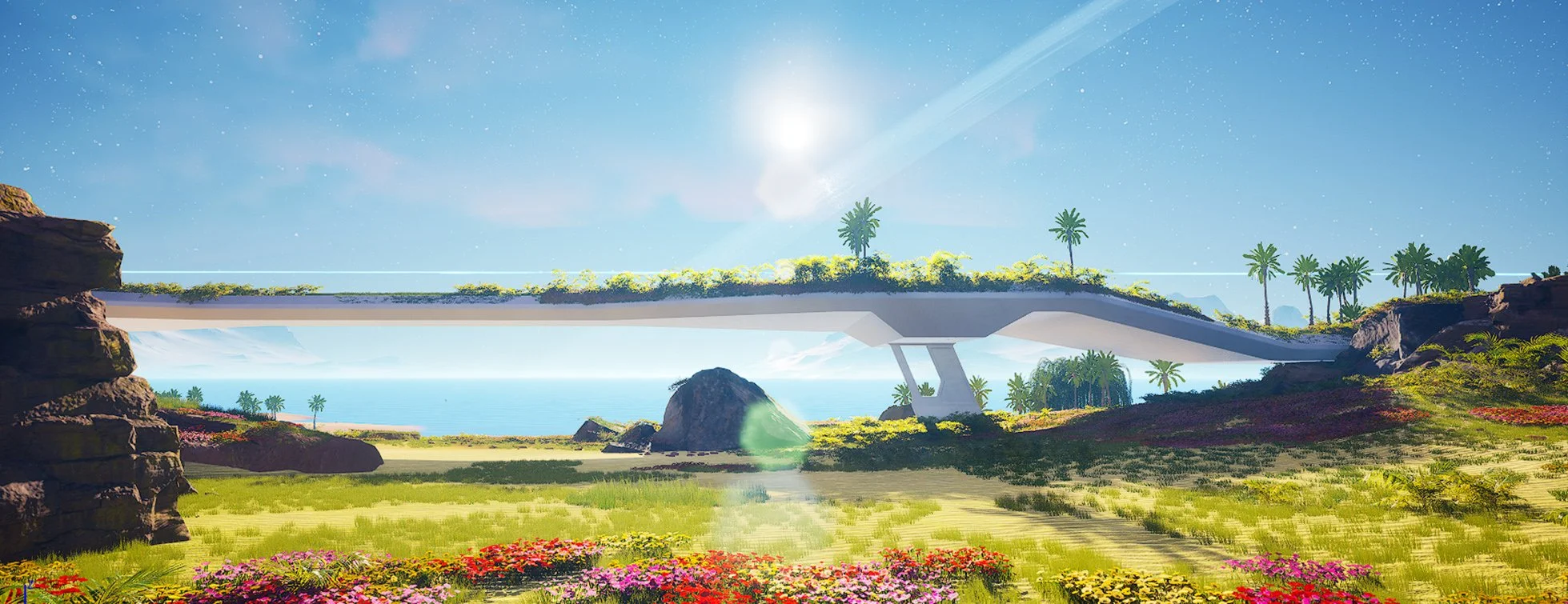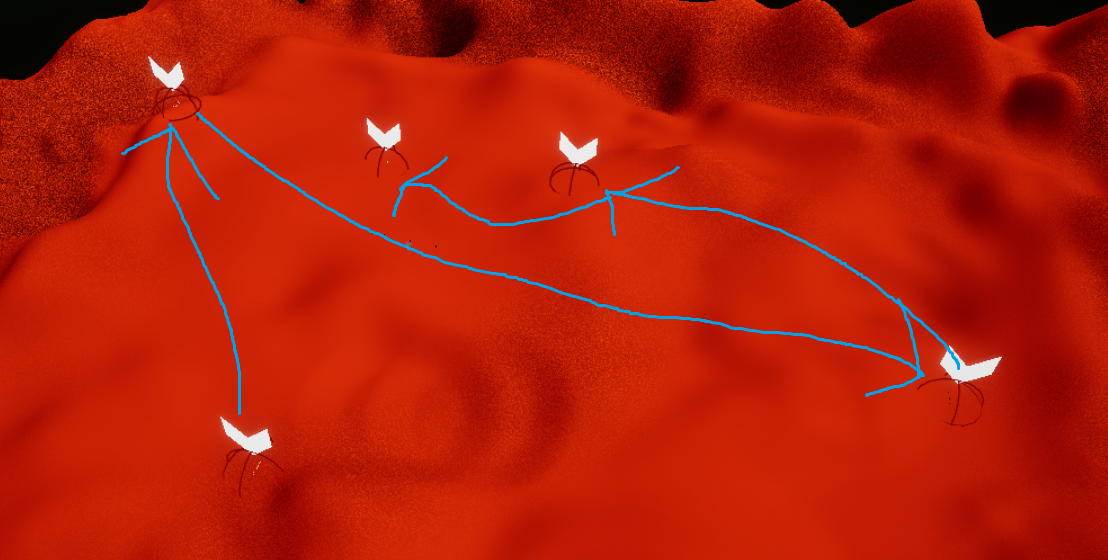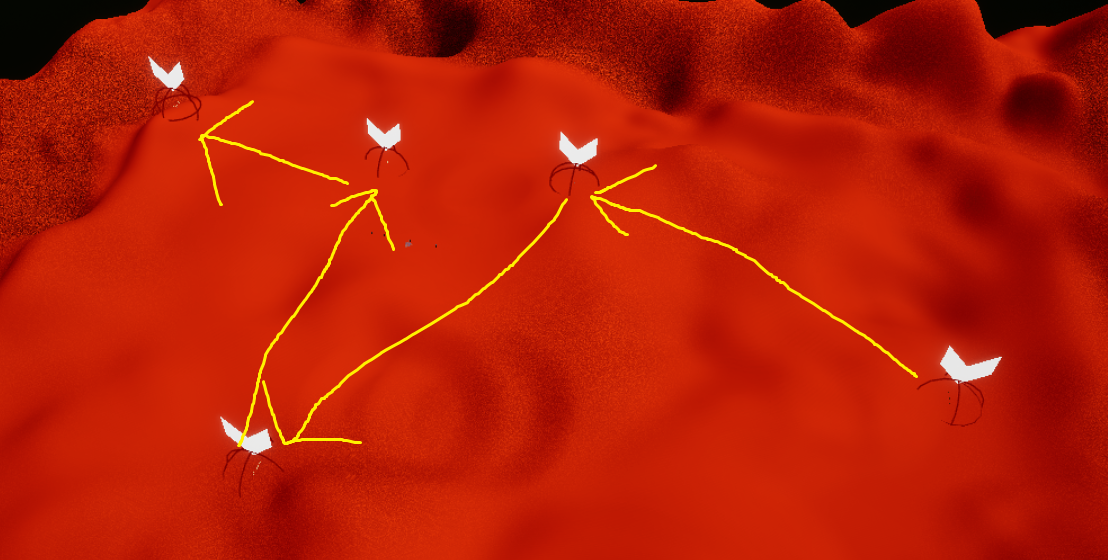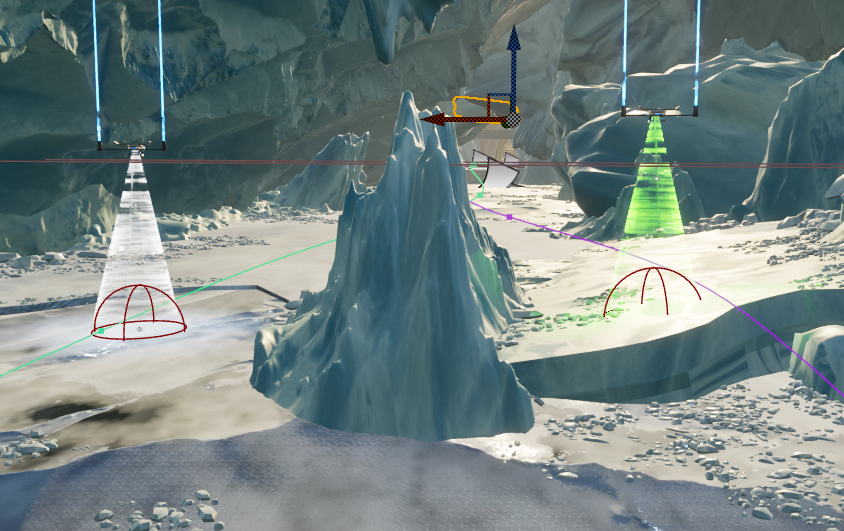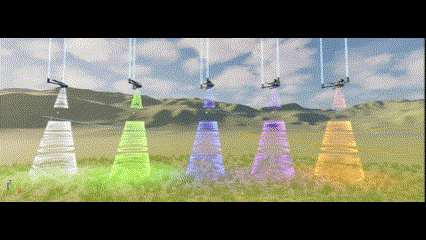Ares 2192 is an open world racing game set on a terraformed mars in the not too distant future. Players take on the role of outlaw racers who have hijacked vehicles previously meant for construction. Drop in, outrace your competitors, evade planetary security forces, and extract. The landscape of mars is varied and tumultuous: when dropping in players never quite know what the experience might hold and what the layout of the track is going to be. Players have to get creative in how they use their environment to come out on top.
My role on the team has primarily been as unreal expert and tech/systems designer. For the project, I am working with a bunch of folks who have been in AAA games for a while, so getting to learn from them and teach them a little about the indie experience has been very rewarding. It’s also been great to flex my design muscles again on something a little more kinetic. In the past a lot of the design work I have done has primarily revolved around resources and strategy, so getting to work on things like game feel and going fast has been a very unique and insightful experience for me.
Exploration
One of the core goals of the design has been to encourage player exploration. This has been a challenge. In a genre that is usually defined by mastery and optimization, encouraging players to venture off the beaten path or even disregard it entirely is proving to be an interesting design problem. We want players to feel a sense of freedom and the thrill of going fast while also not feeling bout by the constraints typically found in a racing game. Because of this almost all of our design energy has been put into making sure that the clear racing line is not always the dominant one without making victory feel arbitrary.
Environment
The other core goal of our design is to really focus on the spectacle of our environments. Driving around on a terraformed mars is not a very interesting prospect if it looks and feels just like earth. How do we build maps that are interesting to traverse and have clear possible paths, when the infrastructure of mars is not setup to be one big race track? As a team we have explored all sorts of solutions to these problems. We have played with gravity, lighting, and large weather hazards, all to drive home the point that racing in Ares isn’t the same experience you’ve gotten in other racing games.
Non-Linear Racing
When sitting down to work on Ares, it was clear that the structure of our racing game needed to be different from the typical track or waypoint system. We needed to build a structure that emphasized exploration and experimentation, without making success feel arbitrary. With the addition of weather effects and massive maps, it was critical to give players options and experiment with different methods of traversing areas, especially if we wanted to create as much content as we wanted to, without going crazy out of scope with art debt.
Initial Attempt
The initial thought process for building non-linear and non prescriptive racing was pretty straight forward. Build a network of possible nodes the player could travel to, build out a system to recognize all the possible locations, and then generate a sequence for the player to traverse. Each race unique though the locations were common.
The thought behind this method was that it would allow players to learn the lay of the land and build game knowledge of the environment while also allowing us to reuse content and keep with our philosophy of pathways that didn’t feel like regimented roads or routes. When spread to further out play spaces these minor differences in routes had macro effects, more fully taking advantage of our open world environments. When testing and playing around with this structure, it actually worked surprisingly well races felt unique while also feeling familiar.
There were however a few places this method fell down, mostly due to a lack of UI and difficulty conveying information to the player quickly while they are traveling at speed. Giving the player enough feedback on where they are headed without being able to give them a map of the course proved to be frustrating to players. Having to stop, pause, and recalibrate your heading mid race was often more hassle than fun and broke flow state. In large part this could have been rectified through a little more time and effort spend on UI. As it turned out, we were about to leave this system far behind for something a little different.
